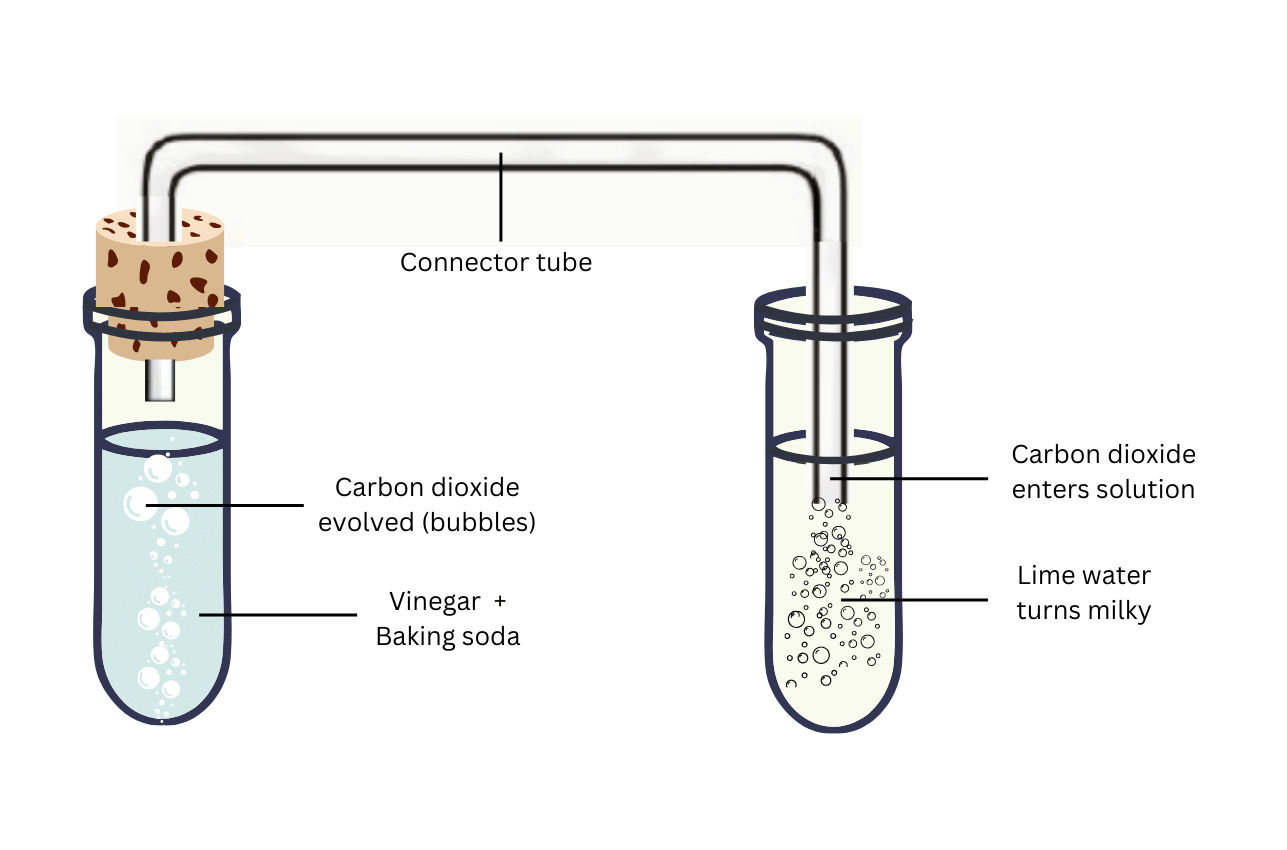8. Complete Activity 5.8 (Page 50). Take about a teaspoonful of vinegar in a test tube. Add a pinch of baking soda to it. You would hear a hissing sound and see bubbles of a gas coming out. Pass this gas through freshly prepared lime water as shown in Fig. 5.5. What happens to the lime water?
Answer:
The activity can be carried out as follows:
Aim: To investigate what gas is evolved when you mix vinegar and baking soda and make the necessary conclusions.
Materials Required: Vinegar, baking soda, lime water.
Procedure:
(i) Take a teaspoonful of vinegar in a test tube and add a pinch of baking soda to it. Observe what happens.
(ii) Immediately connect this test tube to another test tube containing freshly prepared lime water as shown in the figure. Note the observations.

Observations:
You will observe that:
- When baking soda is added to vinegar, a hissing sound is heard and bubbles of a gas are seen coming out.
- When the gas is passed through lime water, the lime water turns milky.
Conclusions:
We conclude that:
- Since lime water turns milky due to passage of the gas, the gas is carbon dioxide. This is a standard test for carbon dioxide. Calcium carbonate is formed which makes the lime water milky. The reaction is shown below:
Carbon dioxide (CO2) + Lime water [Ca(OH)2] → Calcium carbonate (CaCO3) + Water (H2O)
- It is evident that carbon dioxide gas is evolved in the reaction between baking soda and vinegar as shown below:
Vinegar (Acetic Acid) + Baking Soda (Sodium hydrogencarbonate) → Carbon dioxide + others
- New substances are formed in this reaction, indicating that it is a chemical change.
“Complete Activity 5.8 (Page 50). Take about a teaspoonful of vinegar in a test tube. Add a pinch of baking soda to it. You would hear a hissing sound and see bubbles of a gas coming out. Pass this gas through freshly prepared lime water as shown in Fig. 5.5. What happens to the lime water?” – Solved.
Related Links:
Solution to Extended Learning – Activities and Projects Question 1
Solution to Extended Learning – Activities and Projects Question 2
Solution to Extended Learning – Activities and Projects Question 3
Solution to Extended Learning – Activities and Projects Question 4
Solution to Activity 5.1
Solution to Activity 5.2
Solution to Activity 5.3
Solution to Activity 5.4
Solution to Activity 5.5
Solution to Activity 5.6
Solution to Activity 5.7
Solutions to Chapter 5 Physical and Chemical Changes


